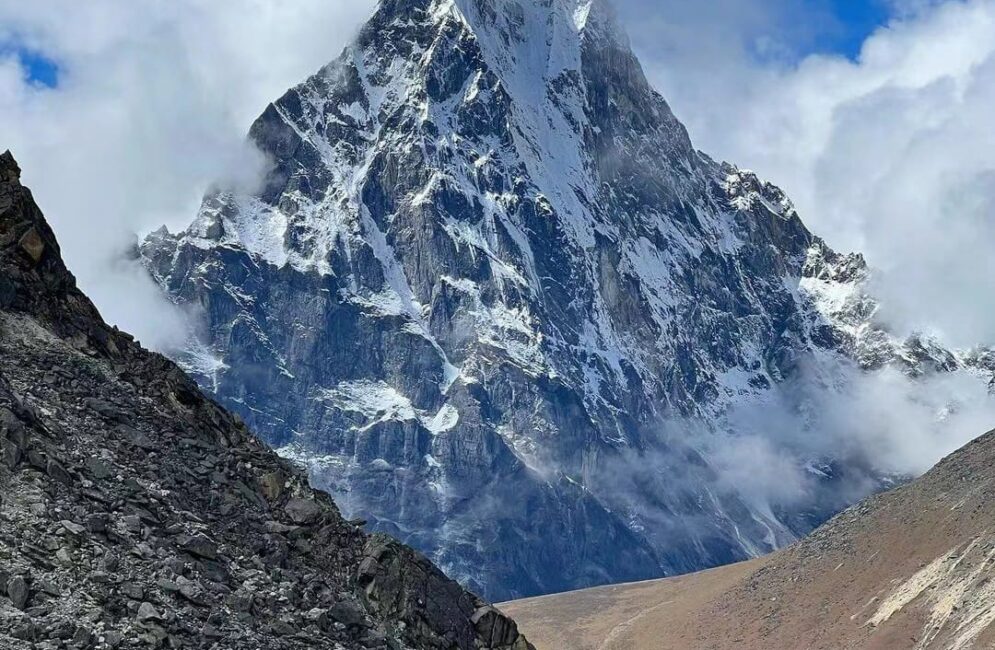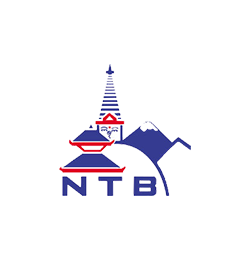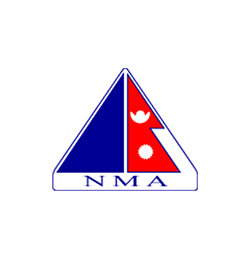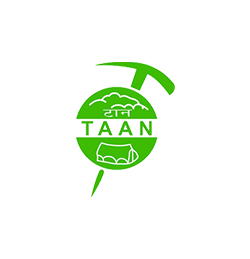
At first why one should join in for Trek to Everest Base Camp with top ten reasons, we at White Hill Adventure Treks and Expeditions would like to offer you the best information for trekkers wondering for their adventure to Nepal Himalaya for Everest base camp trekking.
01. Mt. Everest towers as world tallest peak
Adventurer and trekkers are aware that Mt. Everest stand at the height of 8,848 m and 29,028 ft high, a dream of million travelers to catch glimpse of mighty peak and to be as close within a mere distance of number one Mountain on this planet earth.

The mountain first conquest was in May 29th 1953 by late Tenzing Norgay Sherpa and Sir Edmund Hillary with British Expedition led by late Sir John Hunt, since then more than thousand of climbers from wide -world countries have sum-mated.
The British Expeditions of 1953 was for tribute and to add charm for Queen Elizabeth II coronation which was the successful feat in the history of mountaineering where Tenzing and Hillary showed and exposed to the world the beauty of Everest and high Khumbu valley.
02: Dramatic Scenery and beautiful Landscape
Second best reason is dramatic scenery of the country makes the trek to Everest Base Camp worth visiting.
As the mid areas are covered with green rolling hills whereas your walk takes you with slow and scenic climb from one village to another with ever present views of Mt. Everest and its adjoining peaks.
Therefore lovely landscapes for pleasant walks along with views in the shade of cool alpine forest lined with tall rhododendron, magnolia, hemlock, oaks, blue pines with silver fir trees with lush green vegetation that coves along the side of trekking trails.

The green vegetation and tree lines around its pristine environment makes walking much easier on high altitude adding more moisture within dry air surrounding that helps to maintain oxygen level better and as well to get acclimatize faster than on arid and barren terrain.
The landscapes and topography of the country is unique with high hills, wide open valley and deep gorge within close to towering peaks of Khumbu with high Mt. Everest.
Soon the tree lines disappears from scenic Tengboche Monastery area for windswept and arid terrain as walk leads you closer to giant mountains and within high scenic valley of Pheriche and Imjatse enclosed with array of peaks.
03: Within world highest National Park of Sagarmatha / Everest
Number third reason for treks to Everest Base Camp, where one will be within exotic location of high mountains as the high region of Khumbu and Everest well protected and conserved by Sagarmatha National Park with an area that covers 1,148 sq.kms from east to west of Khumbu.
Sagarmatha National Park extends close to Baruntse and Makalu mountains in the east direction and to western section close to high Tashi-Labtsa pass that leads to another beautiful valley of Rolwaling and in the north touches the border of Tibet at Nangpa-la high pass.
As the trekking area to Everest base camp and around high Khumbu valley within Sagarmatha National park includes world highest peaks with number one Mt. Everest, Lhotse the 4th highest and Mt. Cho-Oyu world 6th high with array of well-known high peaks Mt. Pumori, Amadablam, Thermasarkhu, Kwangde, Khangtiaga and Gyachung Kang.
Sagarmatha a name in Nepal for Everest, while local Sherpa calls as Chomolungma in both language means ‘Great Mother’ and the park listed in World Heritage Sites since 1979.
Everest Base Camp and high Khumbu within the park where mountains are geologically young and broken with deep gorges, glacial valley, around the mid hills are green with lovely tree lines as walk leads you further ending within alpine scrub and bushes with bare rock, moraine and snow.
04: Everest Base Camp Trekking with exotic flora and fauna
Spring time from March to end of May months, where walking will be more exciting with famed bloom of rhododendrons flowers with various species from tall trees to bush rhododendron although other flora is mostly colorful during monsoon season of June to August which falls during low season of trekking and not recommended unless you are interested in flora and fauna or botanical and zoological students.
However Trek to Everest Base Camp during spring and late autumn season one can catch glimpse of wild animals most likely to see are the Himalayan Thar, Ghoral, Serow and musk deer, where snow leopard and Himalayan black bear exist but rarely and hardly sighted, other mammals rarely seen are the weasel, marten, Himalayan mouse hare (Pika), and jackal and languor monkey around mid hills.

Birds life are also abundant during spring time mostly commonly seen colorful pheasant and national bird of Nepal called ‘Dafay’ (Lophorous), snow cock and hen, Lammergeyer ‘bearded eagle’, flock of snow pigeon, snow sparrow and robin and other species of birds with mountain crows known as chough or gorak in Sherpa language.
Where Yeti or snowman story among local Sherpa has become a legendry and folklore, where adventurer still exploring to find the wild snowman the Yeti around Himalaya and around Everest region might have existed in the past hundreds of years ago.
05: Culture and Traditions on route Everest Base Camp
Number Five top best reason the cultural side on Everest Base Camp Trekking; the area around high Khumbu valley of Everest region highly populated by Sherpa the ethnic tribe of Everest and other high Himalayan areas of Nepal from Mid-East to Mid-West.
The region trek to Everest base camp follows through many Sherpa villages the dominant tribe of high Khumbu and Everest area, present statistic shows approx number of Sherpa population within Khumbu of 3,000 people, interwoven with Buddhism religion and culture of age-old heritage.
As you walk into villages coming across religious monuments and Buddhism symbols of prayer walls and spinning wheels and bells, Sherpa are highly settled around from Lukla, Namche Bazaar, Khumjung, Khunde, Thame, Tengboche, Pangboche and Phortse.
The economy of Khumbu Sherpa community traditionally been heavily based on trade and livestock herding cattle cows, ox and yaks due to strong Buddhism practice where killing of animals restricted and not allowed within high Khumbu region, where fresh meat products are found only on Saturday market at Namche Bazaar butchered and brought from lower area of Solu, the lower side of Everest.
Although busy with farm and cattle herding, since last three decades the coming of international mountaineering expeditions since 1950 and the influx of foreign trekkers, the Sherpa economy today increasingly dependent upon tourism.
The Sherpa men-folk since mountaineering came into existent for Everest and other mountains and peaks has always been a pioneer as mountain and trekking guide, as they are born and bred on high altitude can withstand cold freezing temperatures and high altitude within thin air.
That makes Sherpa the Highlanders of Everest and expert mountaineers and loyal guide to lead you Everest Base Camp and other scenic destinations around Khumbu and Everest area.
06: Accommodation on Everest Base Camp Trekking
Trekking; the area around Everest welcomes you with big cheerful smiles which are part of Buddhism and Sherpa heritage and traditions.
Trek to Everest base camp or any other destinations around high Khumbu where you will find good and cozy lodge for overnight stay with some rooms facing superb views of beautiful scenery and mountains.
From the start of your walk from Lukla, a busy town and gateway to Everest base camp and other scenic areas of Khumbu, after days of walks with overnight in the comfort of nice Sherpa lodge.

The lodge provides from basic to standard rooms or deluxe and luxury as per your budget for the trips to Everest Base Camp with various lodges to choose, mostly one can find comfort in a room either attached bath and toilets or common sharing.
However all rooms are spacious as per the standard of lodges chosen with soft beds, whereas you can sleep using your own sleeping bags if not using lodge quilts and blankets which is much better as Everest being in high with cold temperatures using your covering sleeping bags will be the safest and best ways to stay healthy with sound sleep.
Dining rooms are large in most of the areas of trekking route with pot bellied or similar stoves to heat the rooms making it nice and cozy while you enjoy dinner according to the menu list of foods to choose from.
07: Food on Everest Base Camp Trekking
As Everest area has become one of the most popular destinations where food are safe and hygienic served by expert cook of the lodge or by family run places, the meals with varieties of delightful meals to choose from light snacks to main course.
Menu includes famous and popular Nepalese Dal-Bhat (boiled / steam rice with various different lentil soups to add with seasonal vegetables cooked to your taste with some mild pickles to add), menu ranges with Indian, Sherpa, Tibetan and Chinese to Continental foods also.
Some lodge offers fresh bakeries products like cakes, pie and muffins etc followed by warm drinks. Meat products are few however menu does have steak from Yak meats or other animals but be careful on the way up as it is hard to digest meat products on high altitude and if you are not accustomed with Asian food or meat stuff.
Still higher above 3,500 m lodge have limited numbers of rooms with very few places having attached bathrooms and toilets, as you can understand due to cold freezing climate and harsh terrain to run the plumbing systems in highest elevation.
The best way to use common bathrooms and toilets from Namche and Tengboche further high so that you can enjoy the walks with exciting views of high mountain range.
08: Best season for Everest Base Camp trekking
Weather one of the main highlight and the season for the treks, Everest base camp can be trekked all around the year except for monsoon wet months of July to mid September. March to May much popular around spring time when days are best for views and walks with clear blue sky.
Other excellent time for Everest base camp from mid September to December during autumn / fall and pre winter, although much cold in the morning, evening and night time rewards you with clear fine day most of the time to enjoy magnificent views and pleasant walks, during this time can snow on higher side on treks.
09: Impressive monasteries of great interest on
On trek where walk leads you to impressive Buddhist monasteries one of the most simple religion of great interest to visit around with monastery in Lukla, Namche and at Khumjung (the oldest one a monastery whereas you can witness scalp believed to be of Yeti).
Other interesting Buddhist Monastery of Tengboche located within beautiful forest surrounding with alluring panorama of high mountains with views of Everest that encircles this magnificent monastery.

The oldest monuments rebuilt after it was destroyed by huge fire in 1991 and stand now in its beautiful original shape yet.
from there great Mani-Rimdu festival held once a year in the month of October and early November.As per Buddhist Luna calendar an impressive and colorful events to observe the interior enriched with beautiful religious painting adorned with statue of Lord Buddha and other likewise famous Gurus.
10: Route to Everest Base Camp Trekking
Of course, important to know of your duration of treks and with designated overnight stops, after taking a swift short and scenic flight to land at Lukla airport named “Tenzing and Hillary” walk leads to Phakding-Monjo and then at Namche for two nights with acclimatization days.
From Namche to Tengboche and so at Dingboche to reach Lobuche and then towards the highlight of the adventure at Everest Base Camp with climb to Kalapathar the highest spot of the trip at 5,545 with super close views of Everest and surrounding high peaks.
Besides the walk back to Pangboche-Namche and to Lukla with flight to Kathmandu.An complete your glorious adventure and experience on Trek to Everest Base Camp. Last and not the least for Everest Base Camp trekking with many other different reasons but with the final Ten information with length of the journey and days to choose from.
Actually Everest Base Camp Trek of minimum 11 nights and 12 days from Kathmandu to Kathamdnu , interested people can add extra days for your interest extending to more days than normal standard itinerary programs.
Everest Base Camp Trekking travelers can include Gokyo with Chola pass Trek or choose high challenging adventure Crossing Three High Passes or walk the original classic route for Jiri, can pick the hidden trail from Arun valley to reach Everest Base Camp, makes another great walks with various route to choose.






